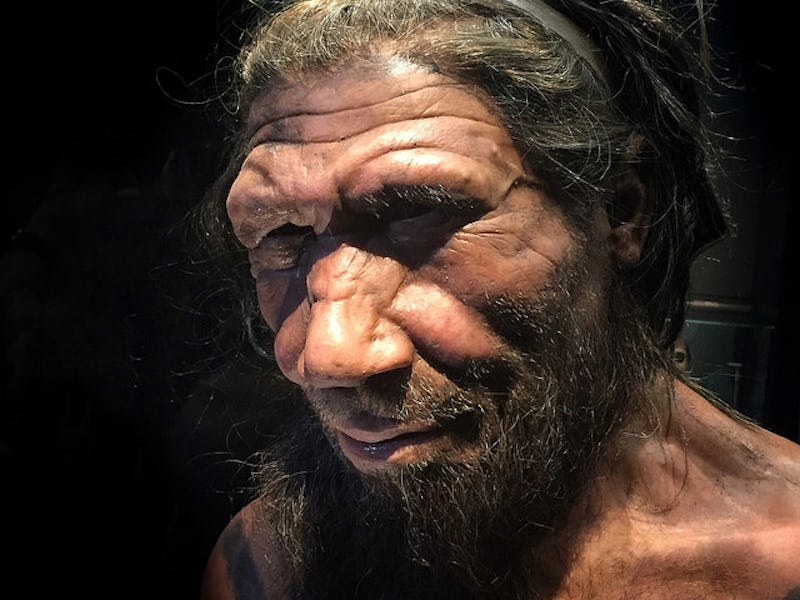Neanderthals Were Screwed From the Very Start, Say Scientists
They were never going to outlast humans.

The only living evidence of Neanderthals today is in the genomes of human beings. Scientists approximate that between one and five percent of modern European and Asian genomes contain Neanderthal DNA — a reminder that, for a period of about 15,000 years, anatomically modern humans and Neanderthals coexisted and hooked up until the complete disappearance of Neanderthals 38,000 years ago.
The nature of the relationships between modern humans and Neanderthals, and what eventually caused Neanderthals to die out, is still debated. A study released Tuesday in Nature Communications continues the conversation, positing that Neanderthals were always doomed to extinction.
It’s widely accepted that the hominid species met and mated when a band of modern humans migrated out of Africa at the end of the middle Paleolithic era, but scientists haven’t been able to determine whether the eventual demise of the Neanderthals was a result of competition with humans or environmental factors. The Stanford University scientists behind the new study, however, used computer modeling to show that the continuous migration of modern humans from Africa into Eurasia meant that they were always going to eventually replace Neanderthals, whether or not natural selection or other environmental factors played a concurrent role in the Neanderthal collapse.
“Our simple model suggests that recurring migration from Africa into the Levant and Europe — even at a low rate — was sufficient to result in the Neanderthals’ replacement even if neither species had a selective advantage over the other, and regardless of possible differences in population size between the two species,” the researchers write.
This model suggests Neanderthal replacement was determined by migration and random species drift.
The predominant competing theories on what happened to the Neanderthals are that either environmental factors, like climate change or an epidemic, caused the ancient beings to die out, or that modern humans had some sort of selective advantage. This specific advantage varies with scientists’ hypothesis, but the most shared idea is that Homo sapiens had a superior cognitive capacity, and the culture that emerged from that allowed them to thrive.
Stanford researchers Oren Kolodny, a postdoctoral research fellow, and Marcus Feldman, Ph.D., say that their model doesn’t prove or disprove either of these theories but emphasizes that Neanderthals would be displaced by modern humans no matter what. In their computer simulation, groups that represented small bands of Neanderthals and modern humans were randomly chosen to go extinct. This group was then replaced by a new one, and either species were equally likely to replace each other. Meanwhile, a group of modern humans, representing the African migration, would be added in.
The researchers ran the simulation demonstrating this small trickle of human migration more than a million times, and in the vast majority of the trials the conclusion was the same: Humans would replace Neanderthals. Even when the migration rates of humans were low, Neanderthals in the model died out within 12,000 years. This, Kolodny and Feldman write, proposes a scenario of “gradual replacement.”
Whether or not other factors contributed to the Neanderthal’s collapse remains to be proven. This model raises questions as to whether modern humans really were all that superior to their stocky, heavy-browed peers — both were living in the same ecological niche, but the numbers were in favor of the humans.
Make your inbox weirder: Get emails from Inverse
If you liked this article, check out this video on why evolution has made our faces less punchable.